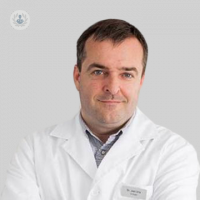The fusion directed biopsy and focal therapy are changing the prostate cancer management
Written by:
 How is prostate cancer diagnosed?
How is prostate cancer diagnosed?
A sample of tissue is removed from the body by a biopsy, and then viewed with a microscope. A thick needle biopsy is the primary method used to diagnose prostate cancer.
The biopsy alone takes about ten minutes, and is usually done in the doctor's office. Antibiotics are likely to be given before the biopsy, and possibly for a day or two after the procedure, to reduce the risk of infection.
Even if many samples are taken, biopsies can bypass the cancer, sometimes if none of the biopsy needles reaches it. This is known as false negative result. If your doctor still suspects that you have prostate cancer (for example, because your PSA is very high), it may be necessary to repeat the biopsy to find out if there is cancer.
What is Fusion Biopsy?
The new standard in prostate imaging for cancer screening is multiparametric magnetic resonance imaging. Until now, urologists have not been able to effectively use this specific information to guide their biopsies. Fusion systems are changing this with powerful but easy-to-use tools for image fusion between MRI and transrectal ultrasound for biopsy orientation.
Firstly, with the MRI we obtain images of the prostate where we can see areas with high, low or no suspicion that there is a tumor in the prostate. Then, at the time of the biopsy, the images obtained in the resonance. This allows marking the areas of the prostate where there is suspicion that the tumor is.
Finally, a biopsy is done perineal (avoiding the rectum). In this way, the accuracy of the final results is more than doubled, and only the essential punctures are performed, directed directly to the area where the cancer is suspected.
What is focal prostate cancer treatment?
Focal therapy aims to treat prostate cancer with a similar approach to other solid organ malignancies. The treatment is directed to the cancerous area and surrounding normal tissues, in order to preserve the tissue and, as a consequence, the function of the organ. By avoiding damage to the entire prostate, the risk of damage to the nerves, muscles, urinary sphincter, bladder and rectum neighbors can be greatly reduced.
There are different sources of energy that we can use, mainly HIFU and cryotherapy.
HIFU (High Intensity Focused Ultrasound) was developed in the early 1990s by the Inserm (French Institute for Medical Research), HCL (Lyon University Hospitals) and EDAP TMS. It has been used routinely for over twenty years worldwide, with more than forty thousand treatments carried out on three generations of commercial devices, Ablatherm® Maxis (from 1993 to 2005), Ablatherm® composed of images (since 2005) and focal One® (since 2013) to treat prostate cancer by creating a precise and irreversible coagulation necrosis of the target tissue, while preserving the surrounding tissue.
In 1996, cryoablation of the prostate was recognized as a treatment option for prostate cancer by the American Association of Urology (AUA), and was no longer considered as experimental. Prostate cryosurgery consists of the in situ and controlled freezing of the prostatic tissue, with the purpose of producing ablation of part or all of the prostate gland to achieve the eradication of the disease and, at the same time, preserve the anatomical integrity of the neighboring structures. The destructive effects of cryosurgery can be grouped into two mechanisms: cell damage and vascular damage.
Focal therapy in prostate cancer is being shown as a strong alternative to radical treatment because it could preserve sexual function and urinary continence. However, large-scale validation studies are needed to be able to offer it in a standardized way.


